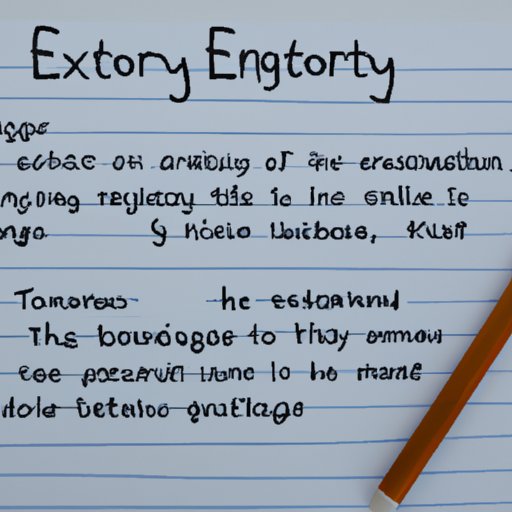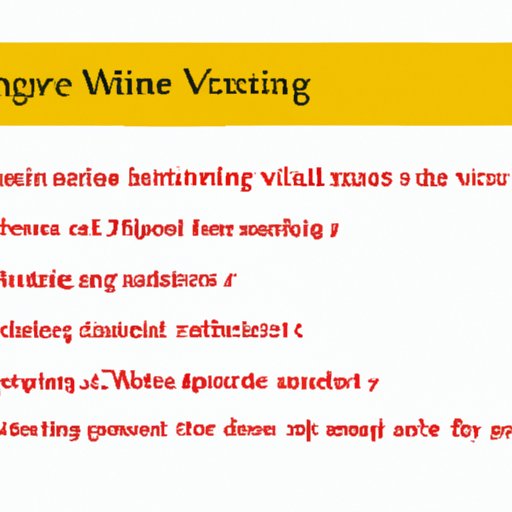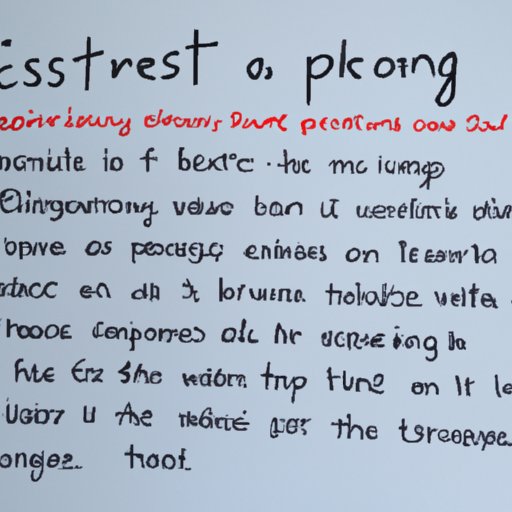Introduction
Narrative and expository writing are two distinct styles of writing that have different goals. Narrative writing tells a story, while expository writing is used to provide information or explain an idea. In this article, we will explore how these two types of writing differ in terms of structure, purpose, audience, language, and characteristics.

Analyzing the Different Structures of Narrative and Expository Writing
The structure of narrative writing is often linear, with a beginning, middle, and end. It follows a chronological order, so the reader can easily follow the events as they unfold. The plot of the story is usually driven by conflict and resolution. The characters in the story are typically developed throughout the narrative, and there is usually some type of climax at the end.
Expository writing, on the other hand, does not follow a linear structure. Instead, it is organized around topics and ideas. The writer presents facts and evidence to support their argument, and the structure of the essay is often determined by the purpose of the essay. For example, a compare and contrast essay will have two sections dedicated to each topic being discussed.
Examining the Purpose and Audience for Narrative and Expository Writing
The purpose of narrative writing is to tell a story that entertains and engages the reader. It is typically written in the first person point of view, which allows the writer to create a more intimate connection with the reader. The audience for narrative writing is usually wider than the audience for expository writing, as it can reach people of all ages and backgrounds.
Expository writing has a much more specific purpose. It is used to explain an idea or provide information about a particular topic. The audience for expository writing is typically more narrow, as it is often written for an academic or professional audience. It is typically written in the third person point of view, which allows the writer to be more objective and unbiased.
Comparing and Contrasting the Language Used in Narrative and Expository Writing
The language used in narrative writing is often descriptive and emotionally charged. The writer uses vivid imagery and figurative language to convey the emotions of the characters and create a more engaging story. The language is designed to draw the reader into the story and make them feel as if they are part of it.
Expository writing, on the other hand, is usually more factual and analytical. The writer uses evidence and facts to support their argument, and the language is often more formal and technical. The goal is to present an objective viewpoint, so the writer avoids using any emotional language or personal opinions.
Although the language used in narrative and expository writing is quite different, both styles of writing can be effective when used correctly. It is important to understand the purpose and audience of the piece before deciding which type of language to use.
Exploring How Storytelling Differs from Factual Writing
Storytelling is an integral part of narrative writing. A good storyteller is able to take the reader on a journey, creating an immersive experience that transports them to another world. Storytelling is usually seen as more entertaining than factual writing, as it allows the writer to evoke emotions in the reader and engage them on a deeper level.
Factual writing, on the other hand, is focused on providing information and presenting facts. The goal is to present an unbiased viewpoint, so the writer avoids using any type of storytelling techniques. While factual writing may not be as entertaining as storytelling, it can still be effective if the writer is able to present the facts in an interesting and engaging way.

Identifying the Characteristics of Narrative and Expository Writing
Narrative writing has several key characteristics that set it apart from expository writing. It is typically written in the first person point of view, and the language is often descriptive and emotionally charged. The story usually follows a linear structure, and the characters are developed throughout the narrative. Lastly, storytelling is an essential part of narrative writing.
Expository writing also has its own set of characteristics. It is typically written in the third person point of view, and the language is often more formal and technical. The structure is usually organized around topics and ideas, and the writer uses evidence and facts to support their argument. Lastly, storytelling is not typically used in expository writing.

Investigating How Narrative and Expository Writing Can Be Used Together
Although narrative and expository writing have many differences, they can also be used together to create a cohesive piece of work. For example, a narrative essay can be used to explain a complex topic in an interesting and engaging way. The writer can use storytelling techniques to draw the reader in and then use facts and evidence to support their argument. This combination of narrative and expository writing can be a powerful tool for conveying information.
Conclusion
In this article, we explored the differences between narrative and expository writing. We analyzed their structures, purposes, audiences, languages, and characteristics. We also examined how these two types of writing can be used together to create a cohesive piece of work. By understanding the differences between narrative and expository writing, you can choose the right style for your project and ensure that your message is effectively conveyed.
(Note: Is this article not meeting your expectations? Do you have knowledge or insights to share? Unlock new opportunities and expand your reach by joining our authors team. Click Registration to join us and share your expertise with our readers.)
